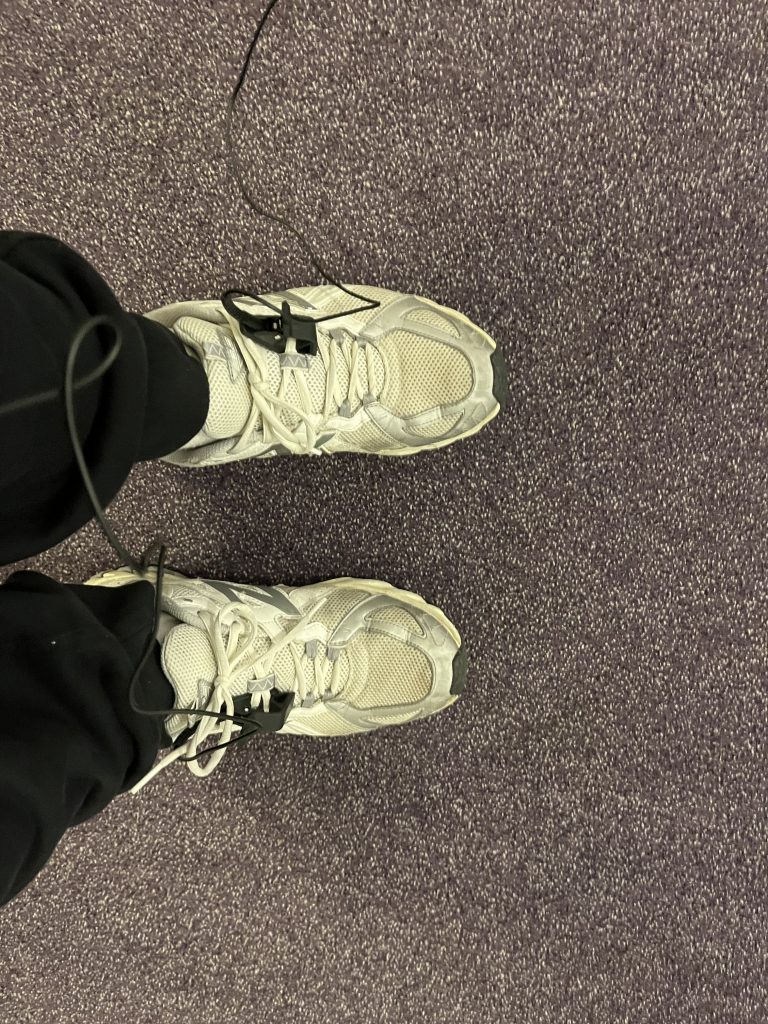The previous experiment using a clip-on contact microphone was successful, but due to the limitations of the footwear, there was still some noise unless filters were applied. Additionally, only one foot was recorded, so it was necessary to determine whether the sound would resemble actual footsteps when recorded on both sides. Therefore, I purchased another clip-on microphone and conducted a new recording, this time wearing sneakers.

One expected advantage was that attaching the microphone to the shoelace area would allow it to pick up vibrations transmitted through the sneaker, rather than directly from the foot, which seemed likely to produce a more desirable sound. The cushioned upper part of the sneaker was also expected to reduce unwanted noise. However, I also anticipated a potential issue: the microphone might generate noise from friction or contact with the laces.
Fortunately, the recording this time was successful. It was possible to capture natural footstep sounds without the need for additional filtering. In fact, the mid and high frequencies were captured more clearly, resulting in a recording that sounded even more like actual footsteps. This will likely conclude the experiment, and I plan to begin filming soon.
However, one concern remains: attaching the microphones may feel irritating—it’s not just a matter of fixing the mic to the shoe, but also properly placing the recorder and ensuring that the microphone cables don’t interfere with walking. This could potentially discourage public participation. If that becomes an issue, I will proceed with filming first and analyze the walking patterns afterward at the same location to add footsteps in post-production.